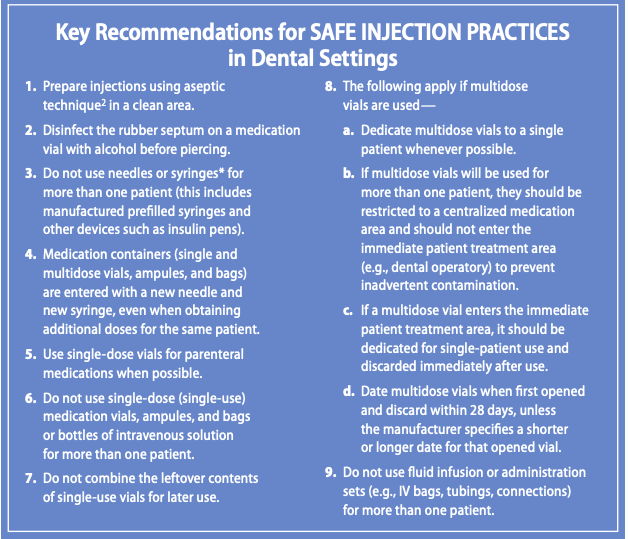Improper dental sanitation practices can lead to devastating consequences for patients. Failure to properly sanitize dental instruments can lead to bacterial endocarditis and other serious conditions that go beyond the mouth.
Luckily the CDC provides information regarding infection prevention that will help protect patient health. The following post is an overview of the dental sanitation best practices, for the complete breakdown please click on the button below.
Needles and unsanitized dental instruments enable otherwise harmless bacteria to break free and travel from the mouth to heart, which can lead to endocarditis. Here’s a quick look at how these dental sanitation practices should be handled.
Needle Safety Precautions
All dental instruments contaminated with blood and saliva must be handled as if they’re infective. Dental practices must establish engineering controls and work practices to prevent injuries due to needle sticks.
All disposable dental tools such as needles, syringes and scalpel blades must be placed in puncture-resistant containers. The location of the containers should be close to the area in which the items are being used.
The official recommendations from the CDC for safe infection practices are as follows:

Sterilization Best Practices
The first measure dentists should use in protecting patients in to protect themselves. Using gloves, face masks, eyewear and other personal protective equipment (PPE) prevents infectious agents from the dentist or dental assistant from transferring to you: The Patient. The following method should be used in sterilizing dental instruments:
- All dental instruments should be pre-soaked before they’re cleaned. Similar to dirty dishes, this will break up some of the stuck-on debris.
- Dental instruments must be cleaned before they can be sterilized.
- After the instruments are cleaned, they must be completely dry before they can be placed in the autoclave for sterilization.
- Pack the instruments carefully. The package containing the dental instruments should be sealed shut.
Final Thoughts
Taking the right precautions to protect patients from dangerous infections. Before scheduling your next dental appointment, make sure to ask the following question:
What are your dental sanitation practices?

